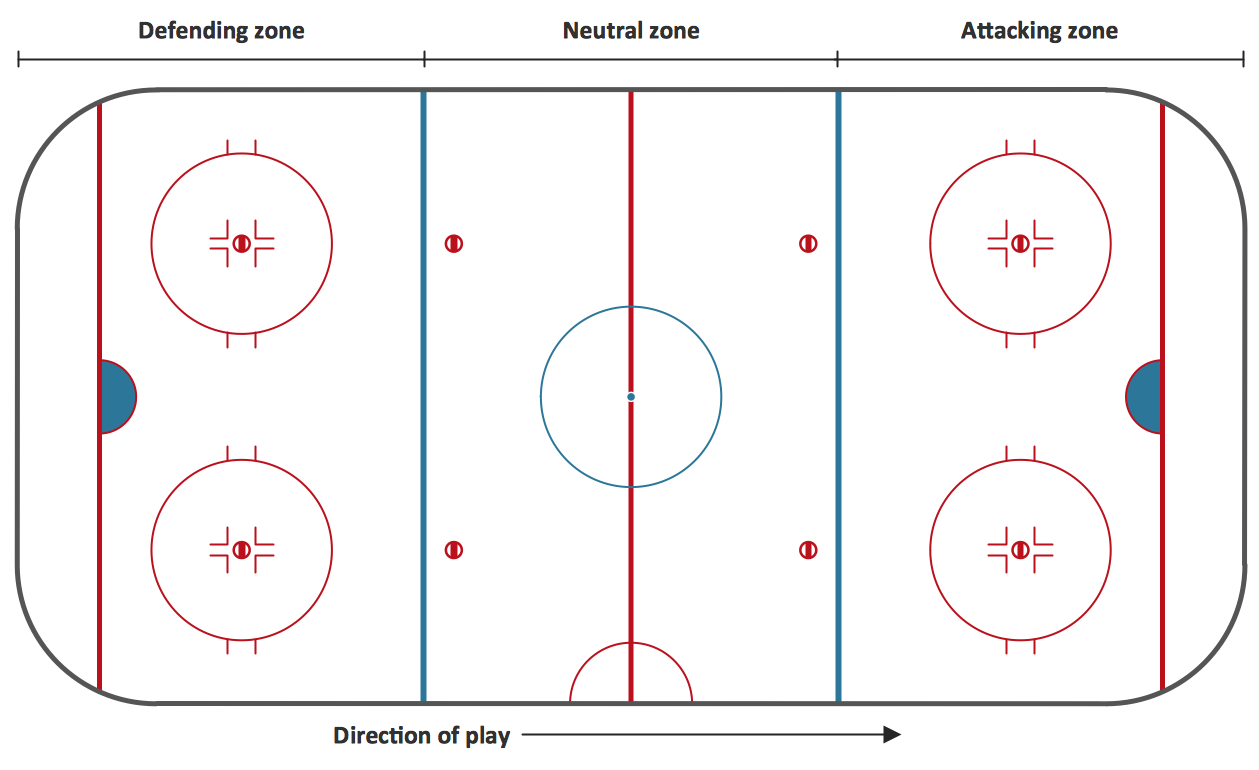I've written a few times before about hockey. I love watching my local sports puck team1 and really wish more people watched it. So, I'm going to write a beginners guide to watching hockey so that you too, dear reader, can become an avid fan.
Hockey is a pretty fast paced game at the professional level. In the 90s Fox Sports had broadcast rights to hockey in the US and to help its viewers they had a glowing halo on the puck called FoxTrax which allowed fans to more easily find it. This practice was discontinued at some point, and I honestly think it was one of the better innovations that Fox Sports did and really wish that it would make a come back.
The Rules
As a beginner hockey observer there's only three rules that you really need to know to be able to follow the game.
- Offside2
- Icing
- Power Play / Penalty Kill
The Set up
The ice rink can be broken into 3 sections from the perspective of 1 team. Let's assume we have two teams, A and B. Let's root for team A.

- The Defending zone - This is where team A's Goal is located. It starts right behind team A's goal and goes to the right toward the blue line
- Neutral Zone - This is the center of the ice between the two blue lines; it also contains a red line that is called 'Center Ice'
- The Attacking Zone - This is where team A are trying to score. It starts at the OTHER blue line and goes back behind Team B's goal
Offside
Offside is defined as ... actually that's not important. What is important to understand is that a player on the offense cannot enter their Attacking zone before the puck does. If they do, then that player is called Offside. When an Offside happens a face off takes place outside of the Attacking zone (i.e. in the Neutral Zone) where each team will try and gain control of the puck.
Icing
Icing, or icing the puck, is when a player in their half of the ice and shots the puck down the ice towards their Attacking zone and it is NOT touched by anyone before it passes the face off circles in the Attacking zone. When an icing occurs the puck is returned to the defending zone for a face off3. When an icing occurs the team that the icing is called on have to keep all of their players on the ice, that is, they can not send in any substitutions.
Power Play / Penalty Kill
The two rules above, when broken, result in a stoppage of play and a new face off for each team to try to gain control of the puck. Other rules, when broken, will result in a penalty4 which sees one, or more, players sent to the Penalty Box5. Penalties can either be minor, which result in a two minute penalty, or major, which typically result in a 5 minute penalty6.
When a team is on the Power Play they will have 1 or more extra skaters than the other team. The other team's 'missing' players will be in the Penalty Box. The Power Play team, with the advantage, will remain on that advantage until either they score OR the penalty expires. If a team scores while on the Power Play, they are said to have scored a Power Play Goal.
The team that has penalized players is said to be on the Penalty Kill. They are trying to 'kill' the advantage that the Power Play brings to the other team. If the team on the Penalty Kill scores a goal, it is called a Short-handed goal ... because they were short a person, i.e. short handed, when the goal was scored. In the National Hockey League (NHL), American Hockey League (AHL), and most other leagues when a short handed goal is scored the Penalty keeps going until time is over OR a goal is scored by the team on the Power Play. The Professional Women's Hockey Leagure (PWHL) has a rule (which I think is genius) which states that IF a team scores a short handed goal, the Power Play is over.7
In the next post I'll talk a bit more about game play.
- The Coachella Valley Firebirds ↩︎
- in hockey it is not pluralized like in American Football ... even though in American Football it's not pluralized either! ↩︎
- This does NOT apply when your team is on a Penalty Kill ↩︎
- I'll talk more about various penalties in future a post ↩︎
- it's a small room where players are sent to think about what they did ↩︎
- There are a few caveats here about game misconduct, but they're not important for an introductory primer ↩︎
- Now, there are lots of Nuances to the PP/PK write up above, but you don't need to understand them initially to enjoy hockey. ↩︎
This post is part 1 of the "How to Watch a Hockey Game" series: